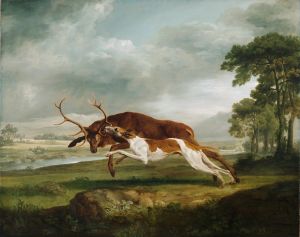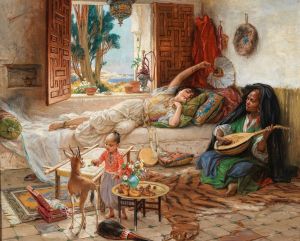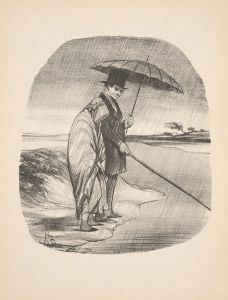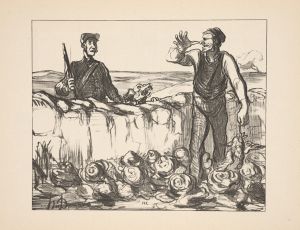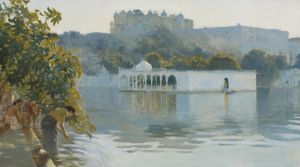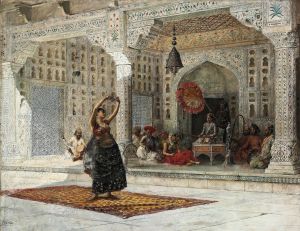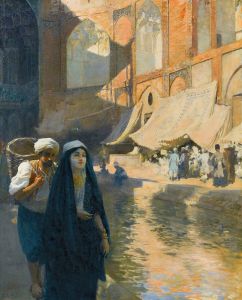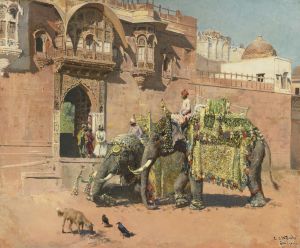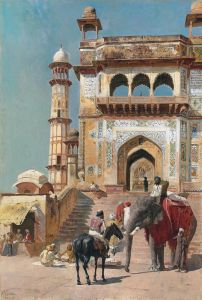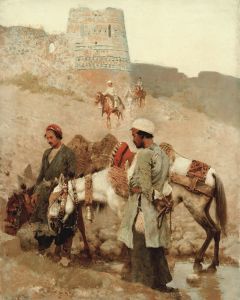
Departure For The Hunt
A hand-painted replica of Edwin Lord Weeks’s masterpiece Departure For The Hunt, meticulously crafted by professional artists to capture the true essence of the original. Each piece is created with museum-quality canvas and rare mineral pigments, carefully painted by experienced artists with delicate brushstrokes and rich, layered colors to perfectly recreate the texture of the original artwork. Unlike machine-printed reproductions, this hand-painted version brings the painting to life, infused with the artist’s emotions and skill in every stroke. Whether for personal collection or home decoration, it instantly elevates the artistic atmosphere of any space.
Edwin Lord Weeks was an American artist known for his Orientalist paintings, which often depicted scenes from his travels in the Middle East and South Asia. One of his notable works is "Departure For The Hunt," a painting that exemplifies his interest in capturing the exotic and vibrant life of the regions he visited.
Edwin Lord Weeks was born in Boston, Massachusetts, in 1849. He developed an early interest in art and travel, which was further fueled by his studies in Paris under the guidance of renowned artists such as Jean-Léon Gérôme. Weeks became part of the Orientalist movement, a genre that romanticized and depicted the cultures and landscapes of the East as seen through Western eyes. His works are characterized by their attention to detail, use of light, and vivid portrayal of the scenes he encountered.
"Departure For The Hunt" is a painting that reflects Weeks' fascination with the cultural practices and daily life of the people he observed during his travels. The painting likely depicts a scene from India, a country that Weeks visited multiple times and which served as a significant source of inspiration for his work. His travels in India allowed him to witness and document the rich tapestry of life, from the bustling markets to the serene landscapes.
In "Departure For The Hunt," Weeks captures a moment of preparation and anticipation. The composition of the painting is carefully arranged to draw the viewer's eye across the scene, highlighting the figures and animals involved in the hunt. The use of color and light in the painting is typical of Weeks' style, with a focus on creating a sense of realism and immediacy. The attention to detail in the clothing, equipment, and expressions of the figures adds depth and authenticity to the scene.
Weeks' ability to convey the atmosphere and energy of the moment is evident in this work. The painting not only serves as a visual record of a specific cultural practice but also as an artistic exploration of movement and interaction. The figures in the painting are depicted with a sense of purpose and readiness, capturing the essence of the hunt as both a practical activity and a social event.
Throughout his career, Weeks' paintings were well-received, and he exhibited his works in various prestigious venues, including the Paris Salon. His contributions to the Orientalist genre have been recognized for their artistic merit and their role in providing a window into the cultures he portrayed. "Departure For The Hunt" is a testament to Weeks' skill as an artist and his dedication to capturing the diverse and dynamic world he encountered.
Edwin Lord Weeks passed away in 1903, but his legacy lives on through his paintings, which continue to be appreciated for their beauty and historical significance. "Departure For The Hunt" remains an important piece within his body of work, exemplifying his ability to blend artistic technique with cultural observation.






